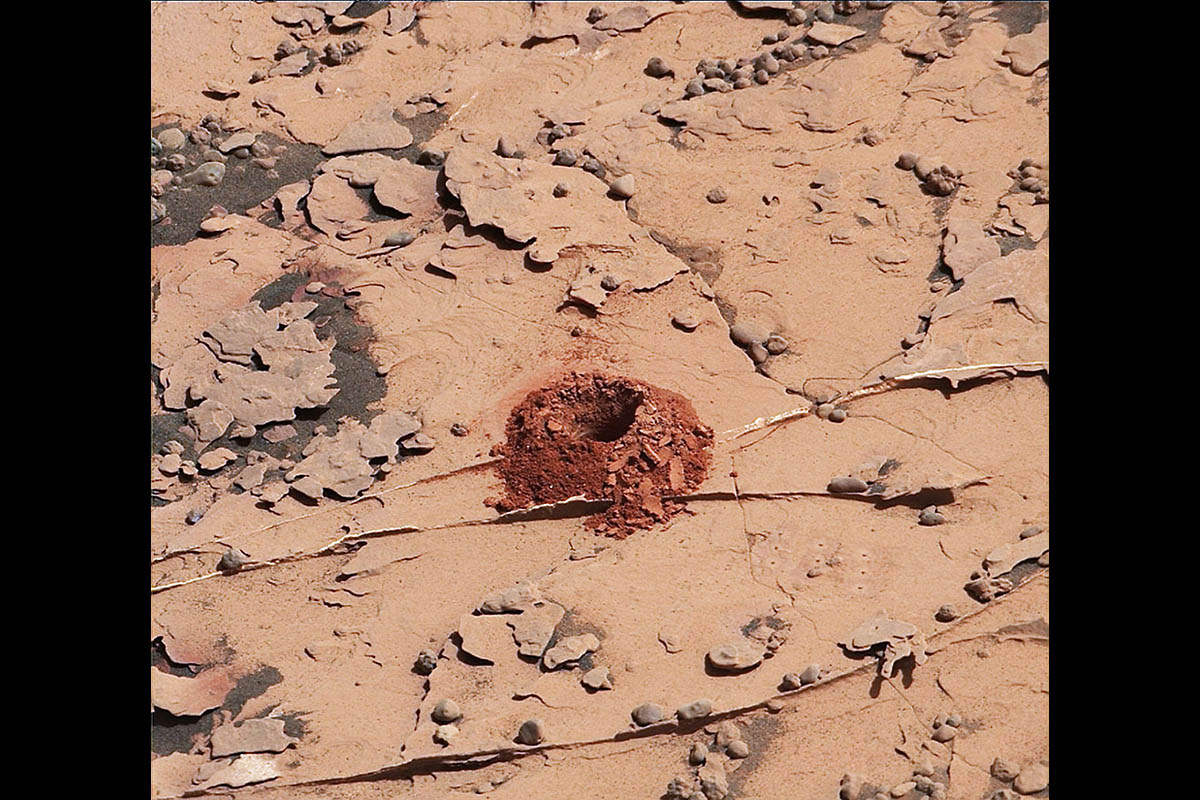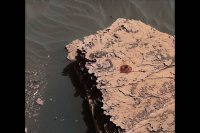A close-up image of a 2-inch-deep hole produced using a new drilling technique for NASA’s Curiosity rover. The hole is about 0.6 inches across (1.6 centimeters). This image was taken by Curiosity’s Mast Camera (Mastcam) on Sol 2057. It has been white balanced and contrast-enhanced. (NASA/JPL-Caltech/MSSS)
Home A close-up image of a 2-inch-deep hole produced using a new drilling technique for NASA’s Curiosity rover. The hole is about 0.6 inches across (1.6 centimeters). This image was taken by Curiosity’s Mast Camera (Mastcam) on Sol 2057. It has been white balanced and contrast-enhanced. (NASA/JPL-Caltech/MSSS) A close-up image of a 2-inch-deep hole produced using a new drilling technique for NASA's Curiosity rover. The hole is about 0.6 inches across (1.6 centimeters). This image was taken by Curiosity's Mast Camera (Mastcam) on Sol 2057. It has been white balanced and contrast-enhanced. (NASA/JPL-Caltech/MSSS)
A close-up image of a 2-inch-deep hole produced using a new drilling technique for NASA’s Curiosity rover. The hole is about 0.6 inches across (1.6 centimeters). This image was taken by Curiosity’s Mast Camera (Mastcam) on Sol 2057. It has been white balanced and contrast-enhanced. (NASA/JPL-Caltech/MSSS)



